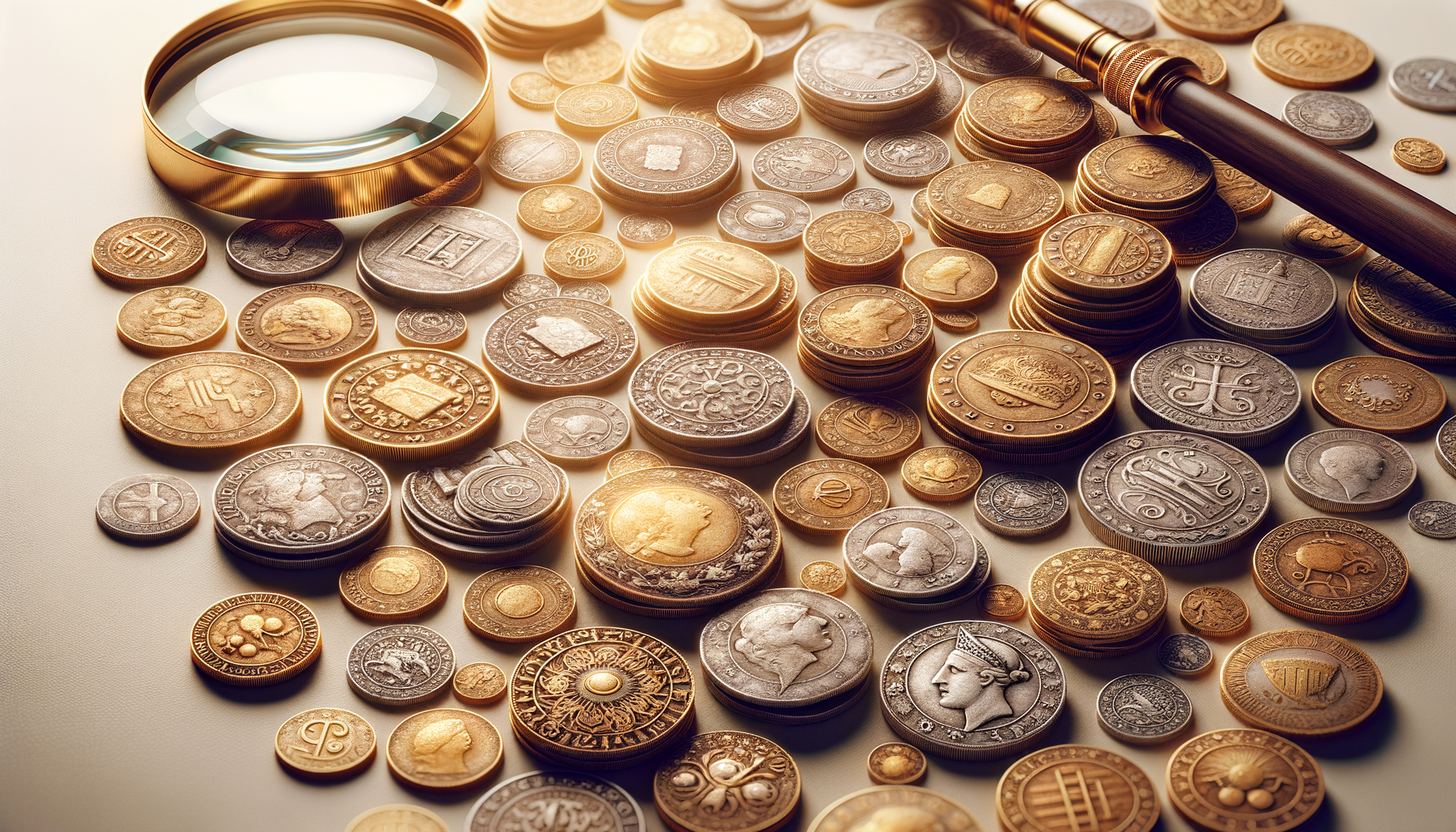The Historical Significance of Coins
Coins have been an integral part of human civilization for thousands of years, serving not only as a medium of exchange but also as a reflection of the culture and politics of the time. The earliest coins date back to around 600 BCE in ancient Lydia, which is now part of modern-day Turkey. These early coins were made from electrum, a naturally occurring alloy of gold and silver, and they featured simple designs that indicated their value.
As societies evolved, so did their coinage. Coins became more than just tools for trade; they were used to convey messages of power and authority. Rulers would often mint coins with their likenesses, using them to assert their dominance and legitimize their rule. For instance, Roman coins often depicted emperors and celebrated military victories, offering a glimpse into the priorities and achievements of the empire.
Today, historical coins are treasured by collectors and historians alike. They offer tangible connections to the past and provide insights into the economic, political, and social dynamics of different eras. Collectors often seek coins from specific periods or regions, appreciating them not only for their monetary value but also for their historical significance.
Factors That Influence Coin Value
The value of a coin is determined by several factors, each contributing to its desirability among collectors. One of the primary factors is rarity. Coins that were minted in limited quantities or have survived in small numbers tend to be more valuable. Additionally, coins with historical significance—such as those from a particular event or period—can also command higher prices.
Another critical factor is the coin’s condition, often referred to as its grade. Coins are graded on a scale that ranges from poor to mint state, with higher grades indicating better condition. A coin in mint state is one that shows no signs of wear and retains its original luster, making it particularly appealing to collectors.
The demand for specific coins can also influence their value. Coins that are popular among collectors, either due to their design or historical context, may see their prices rise as demand outstrips supply. Moreover, the metal content of a coin can affect its value, especially if it is made from precious metals like gold or silver.
Ultimately, the value of a coin is a complex interplay of these factors, and understanding them can help collectors make informed decisions about their purchases.
Notable Coin Collections and Auctions
Coin collecting, or numismatics, is a hobby that attracts enthusiasts from all walks of life. Some of the most famous coin collections have been assembled by individuals who are passionate about history and the art of coinage. These collections often become the centerpiece of major auctions, drawing attention from collectors worldwide.
One notable collection is the Eliasberg Collection, which was assembled by Louis Eliasberg in the mid-20th century. His collection was renowned for its completeness, containing examples of every known U.S. coin. When the collection was auctioned, it set records and highlighted the potential value of a well-curated assortment of coins.
Auction houses play a crucial role in the world of coin collecting. They provide a platform for collectors to buy and sell rare and valuable coins, often setting new benchmarks for coin values. These auctions can be highly competitive, with bidders vying for the chance to own a piece of history.
For those new to coin collecting, attending auctions or viewing auction catalogs can be an educational experience, offering insights into the market trends and the nuances of coin valuation.
Modern Coin Collecting Trends
In recent years, coin collecting has seen a resurgence in popularity, driven by a combination of nostalgia and investment potential. Modern collectors are increasingly interested in coins not only for their historical value but also as a form of tangible investment.
One trend in modern coin collecting is the focus on commemorative and special edition coins. These coins are often issued to mark significant anniversaries or events and can become valuable collectibles over time. For instance, coins minted to celebrate historical milestones or cultural icons can attract significant interest from collectors.
Another trend is the use of technology in coin collecting. Online platforms and digital marketplaces have made it easier for collectors to buy, sell, and trade coins. These platforms offer access to a global market, allowing collectors to find rare coins that might be unavailable locally.
Additionally, the rise of social media and online communities has fostered a sense of camaraderie among collectors. These platforms provide a space for enthusiasts to share their collections, exchange knowledge, and connect with others who share their passion.
How to Start Your Coin Collection
Starting a coin collection can be an exciting and rewarding endeavor, offering both personal satisfaction and the potential for financial gain. For beginners, the key is to start small and focus on coins that genuinely interest you. This could be coins from a specific country, era, or theme.
Begin by educating yourself about coins and their history. There are numerous books, online resources, and local coin clubs that can provide valuable information and guidance. Understanding the basics of coin grading, valuation, and market trends will help you make informed decisions as you build your collection.
When acquiring coins, consider starting with affordable options that fit within your budget. As you gain experience and confidence, you can gradually expand your collection to include rarer and more valuable pieces. Visiting coin shows and auctions can also be beneficial, offering opportunities to see a wide variety of coins and meet other collectors.
Finally, be sure to store and care for your coins properly. Coins are best kept in a stable environment, away from moisture and extreme temperatures. Using protective holders or albums can help preserve their condition and maintain their value over time.


Leave a Reply